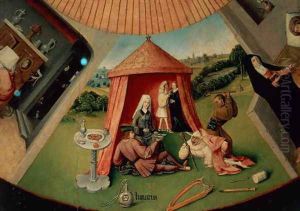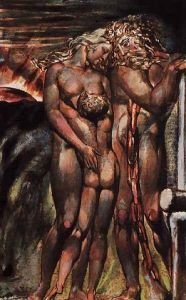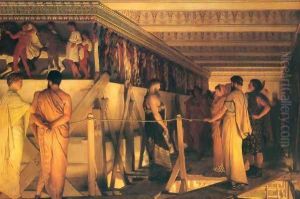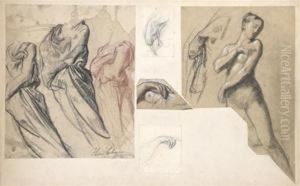





Saint Jordi Altarpiece detail showing the conquest of the City of Majorca by the army of James I 1229
-
About Reproduction
Discover the allure of art with our faithful reproduction of "Saint Jordi Altarpiece detail showing the conquest of the City of Majorca by the army of James I 1229", originally brought to life by the talented Pedro Nisart. Unlike posters or prints, our hand-painted oil painting breathes an unique sense of depth and texture into your space. Every detail, every stroke, and every texture is meticulously recreated, paying the perfect homage to Pedro Nisart and his artistic vision.
Owning this piece is more than just decoration - it's a statement of your refined taste in art. Let the vibrant colors and intricate details of this replica serve as a daily reminder of the beauty in our world. Elevate your decor and appreciate the richness of art with our replica of this masterpiece.
-
Painting Description
The "Saint Jordi Altarpiece detail showing the conquest of the City of Majorca by the army of James I in 1229" is a notable work by the Catalan painter Pedro Nisart, created in the 15th century. This piece is a fragment of a larger altarpiece dedicated to Saint George (Sant Jordi in Catalan), a figure of immense cultural and spiritual significance in Catalonia and a symbol of valor and chivalry. The altarpiece, originally intended for devotional purposes, combines religious iconography with historical narrative, a characteristic feature of medieval European art.
Pedro Nisart, whose work flourished in the 1400s, was known for his detailed and vivid representations of religious and historical scenes. The detail depicting the conquest of the City of Majorca captures a pivotal moment in the history of the Crown of Aragon, when King James I successfully conquered the island of Majorca from the Moors in 1229, integrating it into his Christian kingdom. This event marked a significant expansion of the Aragonese territory and was a critical step in the Reconquista, the Christian reconquest of the Iberian Peninsula from Muslim rule.
The artwork is remarkable for its intricate depiction of the military campaign, showcasing the medieval tactics, armor, and heraldry of the period. Nisart's attention to detail not only serves to immortalize this historical event but also provides valuable insights into the military and cultural aspects of 13th-century Aragon. The use of vibrant colors and dynamic composition captures the drama and significance of the conquest, reflecting the artist's skill in conveying narrative through visual means.
As a part of the larger Saint Jordi Altarpiece, this detail contributes to the overall theme of heroism and Christian faith, embodying the spirit of Saint George as a protector and champion. The altarpiece as a whole would have served not only as an object of veneration but also as a means of instilling a sense of identity and pride among the faithful, linking the contemporary struggles of the 15th century with the legendary exploits of their ancestors.
Today, the "Saint Jordi Altarpiece detail showing the conquest of the City of Majorca by the army of James I in 1229" is valued not only for its artistic merit but also as a historical document, offering insights into the medieval mindset and the intertwining of faith, art, and national identity in Catalonia's rich cultural heritage.
-
Lead Time & Shipping
When you order this oil painting replica, it typically takes 2-3 weeks to paint. If the artwork is more complex, it might need a little more time to ensure the best quality. Once it's ready, we'll send you a photo for your approval. After you give the green light, we'll ship it to you for free.
-
Return & Refund
We believe in the quality of our hand-painted oil painting reproductions, and your satisfaction is our priority. If for any reason, you are not completely satisfied with your purchase, we offer a 45-day return policy. You can return your artwork within 45 days of receipt and receive a full refund. Please note that the artwork must be returned in the original packaging and in the same condition as it was received.




















